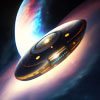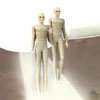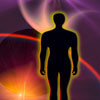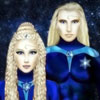Selected by Extraterrestrials
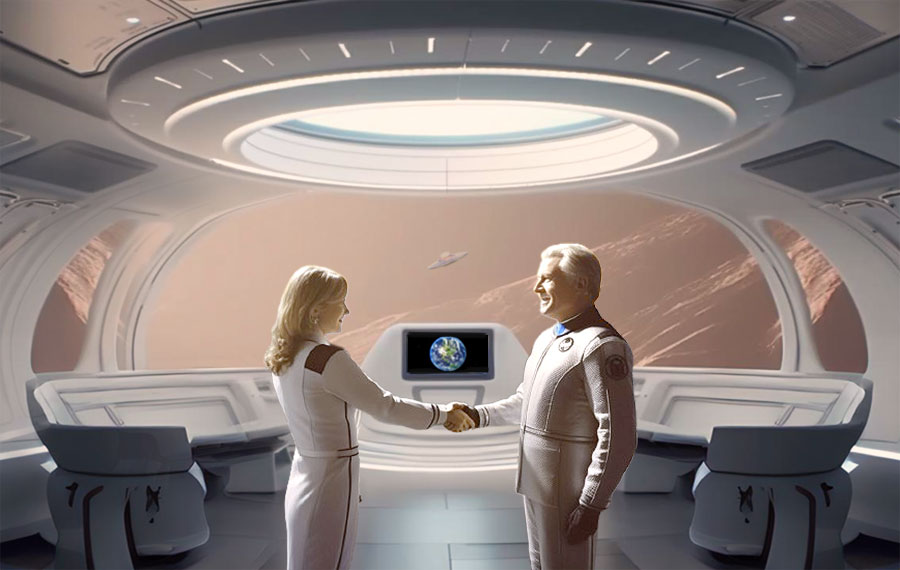 by William M. Tompkins
by William M. Tompkins
“We must prepare ourselves for the most earth shattering news the world has ever known.” — CARL SAGAN
I DID NOT KNOW THAT I KNOW THINGS THAT YOU DO NOT KNOW.
At the outset, it’s important I note that while this book is my autobiography, it does not tell my entire life’s history. It only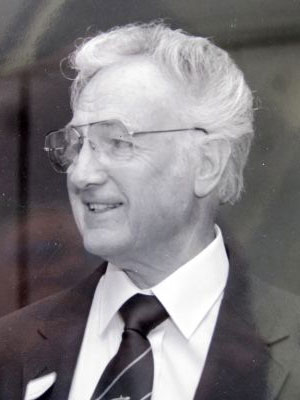 addresses my personal work in, and my knowledge of, the field of aerospace technology from 1950 to 1969. It was a microscopic period of space-time, but one in which a massive change in man’s understanding of his place in the universe occurred. The subject matter contained in this volume is so important that it cannot be covered in just one book alone. The story of the rest of my fantastic life, and corresponding adventures, will be included in subsequent volumes.
addresses my personal work in, and my knowledge of, the field of aerospace technology from 1950 to 1969. It was a microscopic period of space-time, but one in which a massive change in man’s understanding of his place in the universe occurred. The subject matter contained in this volume is so important that it cannot be covered in just one book alone. The story of the rest of my fantastic life, and corresponding adventures, will be included in subsequent volumes.
My dad was good with a camera – he’d taken a lot of photos for his high school yearbook and he became an excellent photographer. While he was developing movie film at Universal Pictures in Hollywood, California, he conceived a major breakthrough for processing film. It was so brilliant that nearly every movie director in Hollywood insisted that he process all of their movies. By 1920, the demand for hundreds of movies to be distributed worldwide became so great that dad built the Standard Film Laboratories, situated on Hollywood Boulevard. This massive production laboratory employed hundreds of technicians, as well as language interpreters to convert English-language versions. These foreign language versions were distributed worldwide to more than 140 countries. Dad remained at the helm of Standard Film Laboratories until his company underwent a financial takeover and he was no longer involved.
JEFF RENSE & WILLIAM TOMPKINS – LOOK UP AND BE AMAZED!
Living in their large home, surrounded by every type of Egyptian antique except mummies, was an adventure and an education. They even had hand-held, three-dimensional wooden photo-viewers that we would use to decipher the symbols.
My three cousins were fascinated with what the young Egyptian girls wore to entice their older male friends. Sometimes, my cousins made skimpy Egyptian prince’s outfits. They would run around the house, and out into their large backyard, with jeweled necklaces flying. The cousins had copied them from photos of the teenage Egyptian royalty on the walls in the pyramids. They were acting out what must have been a very elegant Egyptian lifestyle in their elaborate temples.
Uncle Harding’s home was only a few blocks from the high rise hotel and beach club located below the Santa Monica palisades on the beach. Our mothers, and all five of us children, spent most of the summers at the club, where we experienced some of the finest weather on the planet. Instead of wearing their bathing suits, our cousins frequently wore different clothing, similar to that which the young Egyptians were thought to wear around their enormous pools, palaces and gardens. My head, a sponge, I became fascinated.
Two years later, in our small Hollywood apartment, I decided to build fifty naval ship models, all on a same scale. On weekends, my father would drive me and my brother to the naval docks in Long Beach. Along with other visitors, we were taken out to sea in large powered naval lifeboats. We climbed on board the fleet’s battleships, cruisers, and the occasional aircraft-carrier, anchored in Long Beach Harbor. Cameras were prohibited back then.
I looked at the new radars installed on all the capital ships and could see that they contained a lot of secret equipment. At that time, Navy censors ensured that data concerning classified, on-board systems never reached the media. I mentally recorded images of all the new, classified equipment. On the drive home, I drew rough perspective sketches, and when we got home I turned them into surprisingly accurate illustrations. I made detailed drawings from the sketches of the ships and their weapons, including all the classified radar arrays and anti-aircraft guns. I even located the aircraft carrier’s arrestor gear on the aft flight deck. I then built all the classified equipment to scale and installed it on my models, which were subsequently put on display, by my father in the windows of local department stores. Seeing them, the Los Angeles Times interviewed me, saying I had a photographic memory. They took photos and published the first of hundreds of articles published worldwide over the next fifty years. My collection of model ships was appraised by the Los Angeles County Museum as “one of the finest collections in the country.” In 1942, Naval Intelligence became aware of the ships on display in the windows of the Broadway Department Store – located on Hollywood Boulevard – and investigated my father as if he were a spy. They came to our small apartment and found all my sketches and drawings piled nearly to the ceiling of the bedroom that I shared with my older brother. Instead of being upset, they initiated a program (or, more correctly, a campaign) to enlist me in the Navy. Over the years, the collection would become 309 ships, collectively valued at possibly two million dollars.
Years earlier, while I was visiting the Mount Wilson 100-inch telescope near Los Angeles, a realization hit me. Astronomers had established that the Milky Way galaxy contains millions of other stars, beyond our own Sun. I felt that they probably had solar-systems with planets like our own, which was contrary to what astronomers believed at the time. I was convinced that there must be billions of other stars and galaxies forming even as we watched, most supporting life that was far more advanced than ours. I was convinced that some type of alien intelligence was not only observing our planet, but also influencing it. For some reason, I’ve never accepted that these aliens were simply watching us. It seemed to me that, for thousands of years, they have been hostile, interfering, a threat to our way of life. Ever since I was that little boy, making secret sketches, I have had a preoccupation with our galactic environment.
On February 25, 1942, three months after the attacks on Pearl Harbor, a very strange thing happened. By this time, my family had moved to Long Beach. We were now living in a high, second-floor apartment that was converted from a large home. It was only four blocks from the ocean. At about 8:00 P.M. on the night in question, my father called my brother and me to our deck, which faced the bay. There was a strange, intense light just above the horizon: a narrow beam pointing towards the ocean. The little beam turned horizontally, right into our eyes, and hit the back wall of our apartment and the surrounding trees. It was blinding. Suddenly, and bafflingly, the light went out. Whatever it was, had gone. There was nothing we could do but stand there amazed. Finally, we retired to our beds.
Just after midnight, the air-raid sirens and anti-aircraft guns of the coastal artillery woke everyone up. We ran out onto the street and saw a large round craft, about seven thousand-feet up, floating in the air above us. It slowed to a stop right overhead and remained stationary. It was lit up by eight searchlights, while anti-aircraft shells burst all around and against it. Most of the shells exploded on the bottom of the craft – we just couldn’t believe the thing hadn’t exploded or been shot down! Three, then five, other ships appeared near it; some of the searchlights, as well as the anti-aircraft teams, focused on each one as they passed the first object. Eventually, the first craft slowly departed as well.
Later on, about twelve other craft passed by at higher altitudes and were, in turn, fired upon. It was like a spell: why weren’t the hundreds of us watching this event concerned or frightened? I was not scared; there was no panic. No one was screaming, there were no heart attacks, and no one was going crazy. Other vehicles continued to pass over us for nearly five hours. Our coastal, artillery anti-aircraft crews attempted to shoot down these strange flying machines. By 3:30 A.M. the main show was over. Unconcerned, we went back to bed, although several neighbors told us the air-raid continued and the alarm lasted until 5:00 A.M. The next morning, the newspapers reported that foreign aircraft had been spotted in the airspace between Santa Monica and Long Beach. They failed to mention that half of Southern California watched the event nearly all night.
This so-called Los Angeles air-raid became the first major incident in a long string of events connected to the UFO phenomenon in recent history. And, it was the start of many encounters affecting my entire fifty-seven years of aerospace engineering.
For whatever reason, the public may not have accepted the reality of what we had just witnessed. Another world had penetrated into our lives. I realized that there had to be a massive interplanetary mother-ship, or mother-ships, orbiting our planet, and from somewhere out in the galaxy. The mother-ship had dispatched hundreds of landing-type platform vehicles to the Earth. The nature of their mission was totally unknown. World War II was raging. We had our hands full with the Nazis, and now this?
Furthermore, there were several people in the Navy Department, Army Air Corps and an aircraft company whose entire lives were impacted. They were: Admiral Roscoe H. Hillenkoetter, Secretary of the Navy James V. Forrestal, Army Air Corps General Nathan F. Twining and General Curtis Le May, Edward Bowles of M.I.T., Dr. Vannevar Bush, and Donald Douglas Sr., to name a few. As I tell this story, these other stories will be told as well.
Another person who saw the massive vehicles over Long Beach in 1942 was a Navy intelligence officer, Lieutenant J.G. Perry Wood. Lieutenant Wood, understanding the talents that went into creating my ship models, put together a mission-package for me and got me in the Navy. He arranged for me to get a job with Vultee Aircraft, while I was still awaiting my security clearance. After being sworn in and having completed boot-camp in San Diego, I was assigned to a position in Naval Intelligence. I was working on advanced technology projects, having replaced a naval commander at the North Island Naval Air Station, San Diego, California. My mission tasks and objectives were to act as a “Disseminator of Aircraft Research and Information.” While only a third class seaman, I was destined to be upgraded rapidly.
My mission was under the direction of the Chief Engineer (a captain, to whom I was to report) and Admiral Rick Obatta, who was in Naval Intelligence. I was to compile and maintain a continuous survey of (a) experimental research laboratory activities, (b) other governmental agencies, and (c) educational scientific institutions, manufacturers, and research engineers. Upon my own initiative, or at the request of any bureau or office of the naval air forces.
I undertook studies of specific instrumentalities and techniques for the purpose of outlining research projects. I was also assigned to the naval management program, enrolled in flight school, and carried out existing and future flight missions, for which I received flight pay. I flew in almost every new aircraft in the Navy inventory, sometimes as the pilot. Among other assignments, I flew admirals out to such places as Douglas Aircraft (Santa Monica), Long Beach, and China Lake, situated in the Mojave Desert. For four years (from 1942 to 1947) I had access to highly classified programs, and was involved in some of the most unprecedented advanced scientific programs on the planet.
The war ended, but it was not until 1946 that I was honorably discharged. My dad had insisted I resign so that I could go to work for him, selling real silk hosiery door-to-door. I hated it. After that, I sold roofing materials for him. I hated that, too. Ultimately, I went to work at Northrop. My work with scale-models had demonstrated that I would be good at making models to be tested in the wind-tunnel. I was convinced this was where my future lay. I got on board in the wind tunnel department. I was also given a job designing airplanes without wings, a job that required a security clearance. I then quit Northrop and went to work at the cybernetics lab at North American, which was at the old Vultee plant. (While there, it turns out I saw circuit board prototypes stated to be made from some ET materials.)
In 1949, my brother and I got a job at Lockheed Aircraft Company in Burbank. When I was working at Lockheed, I became aware of a technical advancement into aerospace activities which was going on at the massive Douglas Aircraft Company, in Santa Monica. Again, my models opened doors for me. They had gotten me into the wind-tunnel model shop at Northrop. And, now, at Douglas, the Senior Vice-President was aware of my ship collections. In fact, he paid me to build for him a model of Donald Douglas’s sailboat, the Endymion, as a birthday gift. As no specifications or drawings were available, I had to document the large boat with sketches before building it. The VP had acquired a copy of my résumé and checked my naval background. Even before the model was completed, he was impressed, and, as a result, in 1951 he transferred me into engineering as a draftsman. Because of my former security clearance with the Navy, the Electronics Section Chief, my boss, transferred me into the highly classified Advanced Design Section, a move that changed my life.
The events date back to 1945, and a top secret report to the Secretary of War. Commanding General of the Army Air Forces, H. H. “Hap” Arnold, wrote: “During these years of war, our military has made unprecedented use of scientific and industrial resources. We must continue to have teamwork amongst the military, industry, and the universities. Scientific planning must be years in advance of the actual research and development.” In this report, Arnold did not, however, reveal his greatest concern – that some type of alien beings were here and that, technically-speaking, might be millions of years ahead of us.
Under the direction of James Forrestal, who was the Secretary of the Navy, on October 1, 1945, several high-ranking big shots were brought on-board, including: General Hap Arnold, Edward Bowles (of M.I.T., and a consultant to the Secretary of War), Donald Douglas (the President of Douglas Aircraft Company), Arthur Raymond (the Chief Engineer at Douglas), and Frank Collbohm (who was Arthur Raymond’s assistant). They met in secret at the Army Air Corps Headquarters, Hamilton Field, California, to set up Project RAND, a way-above-top-secret scientific think-tank. It was created in December 1945, as a special contract to Douglas Aircraft Company, at the Santa Monica Municipal Airport. Inside a highly classified, walled-off area in the Douglas Engineering Department, Project RAND studied the implications of threatening alien agendas. Meanwhile, Frank Collbohm – under the direction of Arthur Raymond and Donald Douglas – had been secretly investigating the strange flight of vehicles over Santa Monica and Los Angeles since 1942. Collbohm would become one of the principal figures leading RAND.
In that same month of 1945, the new office of the Deputy Chief of Air Staff for Research and Development – to which Project Rand reported – was officially established, with Major General Curtis Le May as its first appointee. Then, on March 2, 1946, a letter of contract was executed, which put Project RAND under the direction of Douglas’s Assistant Chief Engineer, Frank Collbohm. The Douglas Think Tank was born.
RAND had two missions: (a) to research the potential design, performance, and possible use of man-made satellites; and (b) to function as a highly classified, scientific research program. The latter included literally thousands of problems in various fields, many related to addressing the technological threats posed by the aliens, considered to be thousands of years more advanced than our own technologies.
By early 1948, Project RAND had grown to approximately two hundred staff members, with expertise in a wide range of fields. The arrangement with Douglas Manufacturing management, however, proved to be a major problem. A conflict of interest was boiling and a separation was imminent. It wasn’t long before the Chief of Staff of the newly created United States Air Force wrote a letter to Donald Douglas. It was a letter that approved the evolution of RAND into a nonprofit RAND Corporation, independent of Douglas, and that’s what it became.
The divorce was problematic. Many PhDs wanted to stay with Advanced Design at Douglas. Elements of the big picture were literally thrown back and forth. Others wanted to walk both sides of the line and not be involved in the big picture. Others wanted to proceed only in their fields. But the think tank was split in two. RAND leased a building in downtown Santa Monica and called it the RAND Building.
Following the divorce, on June 24, 1947, I was still testing electrostatic field propulsion techniques in the science laboratory at Northrop Aircraft in Hawthorne, and still trying to make vehicles fly with almost no wings. It was also on that date that Kenneth Arnold, a private pilot, encountered a tight formation of nine disc-shaped aircraft. They were cutting across his flight path, at high speed, over the Cascade Mountains in the Washington State area. Although this was not the first known sighting of such objects, it was certainly one of the first to gain widespread attention. Hundreds of reports of similar objects quickly followed. Many of these came from highly credible military and civilian sources. The military tried to ascertain the nature and purpose of these objects, primarily in the interest of national defense. They were, however, unsuccessful in their attempts to utilize naval aircraft to pursue reported discs in flight. At times, public reaction bordered on near hysteria.
According to the so-called Majestic 12, Eisenhower Briefing-Document (EBD), mailed anonymously to UFO researcher Jaime Shandera in December 1984: “Little was learned about these objects until a local rancher reported that one had crashed in a remote region of New Mexico on July 5, 1947.”
The site, seventy-five miles northwest of the Roswell Army Air Field, became the staging ground for a secret operation meant to ensure recovery of the wreckage. “During the course of this operation, aerial reconnaissance discovered that four small humanoid beings had apparently ejected from the craft at some point before it exploded, fallen to earth roughly two miles east of the wreckage site,” reported the author of the EBD. All four were reportedly dead. A determination was made that the vehicle was a short range reconnaissance craft, which implied it came from a larger, mother-ship.
To continue reading see Selected by Extraterrestrials, Vol. I
Selected by Extraterrestrials, Vol. II
![]() WILLIAM TOMPKINS SELECTED BY EXTRATERRESTRIALS – PART 1
WILLIAM TOMPKINS SELECTED BY EXTRATERRESTRIALS – PART 1
WILLIAM TOMPKINS SELECTED BY EXTRATERRESTRIALS – PART 2
William Tompkins Last Interview with Jordan Sather
MUFON 2017 Secret Space Program
Posted in Life On Other Worlds, Other Topics, UFOswith comments disabled.


